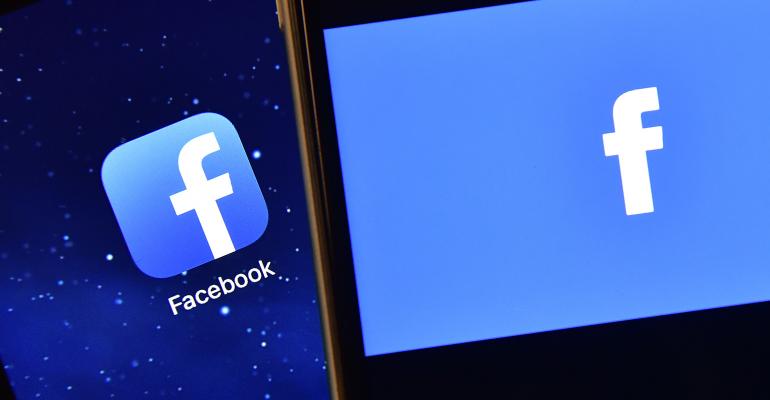As the digital landscape forces traditional media consumption habits to change, it’s more important than ever to employ a “media mix.”
Since radio is so routinely used among financial advisors, we want to illustrate how the use of Facebook in concert with radio is effective. Advertising on radio alone ignores trends among media usage, but the good news is that your investment doesn’t need to increase to accommodate a new medium. Below is an illustration of how combining the two platforms in Boston, Mass. could dramatically increase the number of qualified leads you can reach.
Examining the Available Target Demographic
Here’s an example of the media consumption in Boston of a leading radio station and Facebook users among the 50-plus age demographic, using data from Nielsen Boston, Mass. 2017. We chose a “one-station” comparison because most advisors use one station per market.
Note that the total audience for Facebook for the Boston metro area (according to Facebook Boston Metro) is much larger than a leading radio station in the same market. Importantly, you’ll also see that there’s an overlap of this demographic with audiences of both platforms.

Examining the Useable Target Demographic
Reaching the universe of the 50-plus audience is good, but reaching the “right” 50-plus audience is better. Most advisors request a minimum investment level of $250,000, so this illustration will highlight only this qualitative section of the total audience. Based on Nielsen Scarborough data, the “useable” radio audience ($250K and above in investable assets) is cut to about one-third (as per Nielsen Scarborough 2017 Average, Boston). Facebook statistics show that their “usable” audience is about half.

Recognizing New and Existing Audiences
By combining the two mediums, an advisor who previously only used radio in Boston would have the potential to reach 10 times the “useable” prospects by incorporating Facebook. In addition to the added reach, they’d be able to hyper-focus on prospects that overlap between the radio station and Facebook: in this case that’s about 22,000 people. Moreover, it’s a way to reach highly targeted people multiple times in different, but complimentary, platforms.

More Leads, Same Price
But what if you don’t want to add to your budget? It’s possible to cut back a percentage of your radio schedule with a minimal effect on the actual radio reach.
Here is an example of what would happen if you were to reduce a radio budget by 20 percent over a 26-week period. In this case we will compare a 20 times per week schedule versus 16 times per week, based on messages airing from Monday to Sunday, 6 a.m. to midnight (Neilson Rating Averages Nielsen Average Boston).

As the chart above demonstrates, it’s quite possible to repurpose a portion of your broadcast budget without a meaningful effect on reach.
While every market is different, media consumption, for the most part, is the same. There doesn’t have to be, nor should there be an either/or mentality. Digital, and in this case Facebook, has added a new arena for people to gather and has expanded the media consumption pie. Those who recognize the patterns and act on them will be rewarded.
You can keep your overall budget and use a portion of your radio dollars to increase your reach and frequency via Facebook! Cutting your broadcast budget by 20 percent will minimally reduce your reach. Ultimately, adding Facebook to your monthly broadcast campaign without spending more money will help you to:
- Reinforce your radio message to your audience
- Extend your brand reach and enhance effectiveness of current radio advertising
- Attract new prospects who were not exposed to your radio advertising previously
- Drive more overall, qualified traffic to your website
- Create immediate calls to action
- Build your database by offering corresponding offers
- Reach the people who are only within your target market (in terms of age and investable assets).
John Capuano is Co-Founder and Stephanie Sjoblom is Marketing Project Manager, at Lone Beacon.





